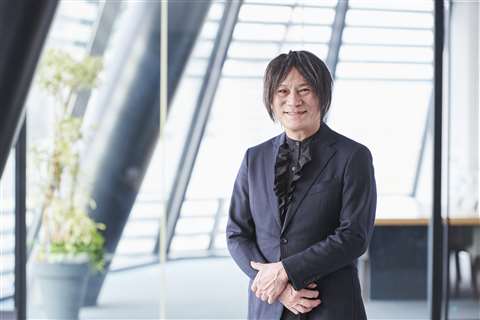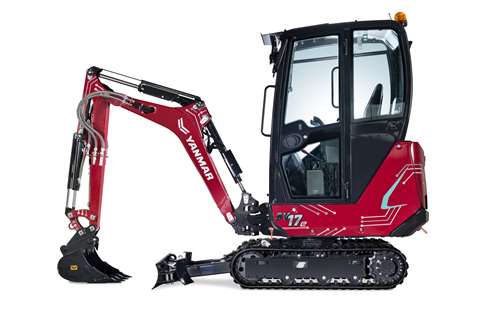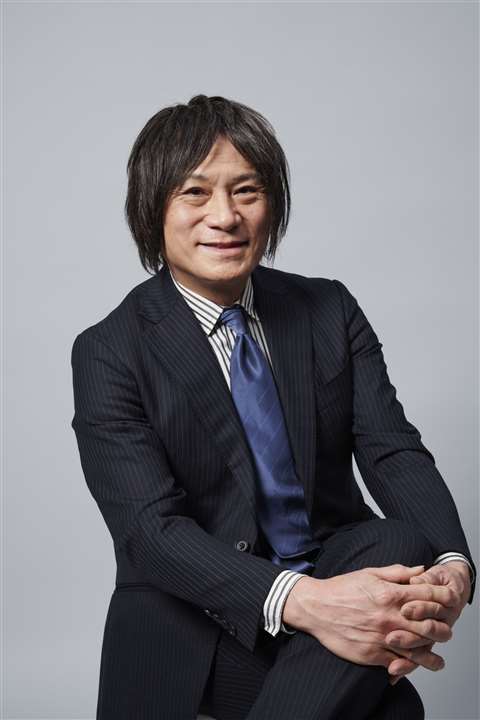Yanmar’s rock star design chief
20 February 2023
Last year, Nagaya ‘Dezi’ Akihiro, became chief branding officer at the Yanmar Group.
 Yanmar’s Nagaya ‘Dezi’ Akihiro. Photo: Yanmar
Yanmar’s Nagaya ‘Dezi’ Akihiro. Photo: Yanmar
Since joining Yanmar in 2022, creatively-minded Dezi has felt at home, and is rising to the challenge the company has set itself to use the best designs to solve the world’s most pressing food and energy problems.
“Yanmar is striving to answer the biggest challenges the human race faces,” says Dezi. “We are doing this through efficient, climate-friendly clean energy solutions, and encouraging innovations in agriculture that foster effective food production. We are answering these gigantic contemporary questions with simple solutions.”
Since joining, Dezi has spent his time touring the company and absorbing the culture and creativity that defines the spirit of Yanmar.
This information he processes on his daily 5km runs. Now aged 62, he retains the energy and enthusiasm that has made him such an influential creative design force over the last 40 years.
A stellar design career
Born in 1960 in Nagoya (between Tokyo and Osaka), Dezi does not come from an artistic background.
His parents had everyday jobs and were part of the generation that created Japan’s post-war economic miracle. While his parents were working, the young Dezi immersed himself in his drawings, and was soon winning prizes for his art and sculpture.
This winning trend continued after completing a degree in Art and Design.
In his first job in Toyota’s design department, one of his sketches for the all-important front-end styling of the first ever Lexus luxury car was chosen for the final design – even though he was the most junior designer on the team.
 Design will play an important role in the shift to electrification – as shown by Yanmar’s V17e Pilot Electric Mini Excavator, which debuted recently. Photo: Yanmar
Design will play an important role in the shift to electrification – as shown by Yanmar’s V17e Pilot Electric Mini Excavator, which debuted recently. Photo: Yanmar
After nearly three decades with Toyota, he found himself as the then world’s largest car company’s design chief.
This was followed by a stint heading the design department of iconic Japanese motorbike and marine engine manufacturer Yamaha.
Tech is nothing without design
When it comes to automotive design, Dezi has ‘been there, done that’. So, can he answer the question ‘what makes good design?’
“It’s a mixture of understanding the mechanics and knowing how to package them in a way that meets performance and safety considerations, but also stirs emotions,” he says.
“The emotional element is crucial – it can be the best product in the market technically, but if people don’t ‘get’ the look of it, it will be a failure. We can’t be boring – we need to make a sensation!”
Not all of Dezi’s designs have been a success: the shape of the last LS400 Lexus – over which he was design chief – didn’t prove so popular with customers. Now working at Yanmar on industrial equipment such as compact construction equipment, do customers really care about how their machines look?
Absolutely,” he says. “There’s no difference between cars and construction equipment. We still need to make the people who use our equipment delighted to do so!
 Nagaya ‘Dezi’ Akihiro is head of design at Yanmar. Photo: Yanmar
Nagaya ‘Dezi’ Akihiro is head of design at Yanmar. Photo: Yanmar
“It’s our job to unlock the secrets of design that will motivate people to choose Yanmar over other brands. Industrial design should be beautiful, no question.“
Another key part of good design is providing utility. We expect more and more from our equipment, including, performance, productivity, efficiency, durability, sustainability, comfort – even entertainment.
“Our machines need to be truly multi-functional. It’s our job as designers to find the optimum solutions to these, often competing, demands.”
Dezi believes that we are in one of the most exciting and important periods of industrial design. Technology is redrawing the boundaries of what is possible.
The shift to electromobility, greater connectivity and automobility is revolutionising how machines work, how they interact with operators and – of course – how they look.
With electric motors instead of diesel engines, future machines will be more compact and packaged in exciting new ways.
Japanese subtlety, simplicity, precision and imagination led innovations in global construction equipment design in the post-WWII technological boom – and could be set to do so again in this new dynamic era of change.
Dezi says, “Machines are fast becoming more than just physical extensions of their operators, thanks to the latest tech and AI, an extension of the brain too.”
Apart from his love of design, Dezi is also an accomplished musician and songwriter. He says, “At heart I am a jazz musician. Music is not a hobby – it’s my life’s work. I even try to look like a rockstar.”
Is there a conflict between industrial design and his love of music?“
No – they are different and the same,” he says. “The media is different, but the heart is identical. The basic question is: How can we express what we want to share with people? We want our ‘customers’ to experience excitement and share our values. That’s what makes good design – art, styling, music – so powerful.”
CONNECT WITH THE TEAM





